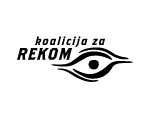Militant followers: Women and the Ustaša – movement / Lecture by Dr. Martina Bitunjac
The second public event in the frame of the project „Staring at Goats. Propaganda, Scapegoating and the Other 1918-2018“ took place on July 25th2019 in the Human Rights House in Zagreb as a part of the seminar entitled “Women at War – Victims, Observers, Perpetrators”. Impressive lecture about women involved in Croatian fascist movement during the1930s and 1940s was given by Dr. Phil. Martina Bitunjac, Research Associate at the Moses Mendelssohn Center at the University of Potsdam.
The audience was welcomed by Dr. Boris Stamenić from the hosting organization “Documenta– Center for Dealing with the Past”, who presented a seminar program to the audience. Thereby he presented the project „Staring at Goats. Propaganda, Scapegoating and the Other 1918-2018“ and the related activities conducted by Documentaand other project-partners.
Following the introduction, Dr. Renata Jambrešić Kirin, Researcher from the Institute of Ethnology and Folklore and Vice-President of the Center for Women’s Studies announced the lecture of Dr. Martina Bitunjac while presenting her remarkable scientific record. As Jambrešić Kirin emphasized, the results of Martina Bitunjac’s multi-year research during the work on her PhD thesis were published in 2018 in a German-language monography entitled “Verwicklung.Beteiligung. Unrecht. Frauen und die Ustaša-Bewegung“ (Involvement. Participation. Injustice. Women and the Ustasha Movement).
Martina Bitunjac’s research and publication are valuable contributions to Croatian historiography for many reasons, highlighted Renata Jambrešić Kirin. The gender approach to the study of totalitarian regimes, with the critical use of oral history as one of the applied methods, makes the book innovative and important, explained Jambrešić Kirin and expressed her wish to see the book translated into Croatian.
At the beginning of her presentation, Martina Bitunjac emphasized the marginal role of women’s perspectives in studies of the Ustasha and other fascist movements so far. Concurrent she mentioned the lack of sources as serious challenge for the researchers. Bitunjac’s research on women in the fascist movement focused two fundamental questions. In studying the subjective perspective of women in the fascist movement, she paid special attention to the question of how women in the Ustasha movement and (later) in the Ustasha institutions, cope with the paradoxical social reality that surrounded them. Concurrent Bitunjac analyzed the image of women that the Ustasha movement cultivated and propagated.
The propagandized image of women was subjected to change in 1941, when the image of “fearless fighter” had been replaced by the dominant image of a woman in the patriarchal role of mother and educator, emphasized Bitunjac. Thereby she stated that Ustasha propaganda was using misogyny in criticism of feminists, Serbs, Jews and others (projected) enemies. The Ustasha regime sought to ideologize a “Croatian woman” who “rids herself” of the idea of “?”?equality and sacrificed for the benefit of the “national community”, she continued.
However, the propaganda image of a woman as a mother and a housewife did not come to life during the war years because the mobilization of women workers in different professions was necessary for the survival of the “Independent State of Croatia”. Furthermore, the female members of the Ustasha movement were very rarely limited to their role as mother and educator. As officials, they politically participated in the formation of a new state and led the women organization “Women’s Vine of the Croatian Ustasha Movement” and the “Women’s Ustasha Youth”, where they were tasked with spreading Ustasha propaganda and mobilizing girls and women in the movement. At the same time, even the supporting of the state-violence was not exclusively in the domain of the male members of the Ustasha movement, added Bitunjac.
During the lecture, Bitunjac presented interesting information regarding several distinctive women associated with the Ustasha regime. Bitunjac highlighted Irena Javor, commander of the Women’s Vine of the Ustasha Movement, and pilot Katarina Matulovic Kulenovic as being examples of women that did not fit into patriarchal image but performed prominent public affairs.
In her research, Bitunjac paid particular attention to women who actively supported the Ustasha ideology and regime, such as Marija Pavelic, wife of Ante Pavelic, headman (Poglavnik) of the Croatian pupet-state during the World War Second, who, not without derision, was nick-named “headwoman” (Poglavnica). Marija Pavelic played an important role in the propaganda visualization of the Ustasha regime, Bitnjac continued, emphasizing that Marija Pavelic advocated for the Ustasha deportation, even though her mother was Jewish. Because of her origins and lack of sympathy, Edmund Glaise Horstenau, commander of the German Armed Forces in Croatian fascist state from 1941 to 1944, derogatorily called her “Kalle”, which means a bride in yiddish language, highlighted Bitunjac.
The final part of the presentation was dedicated to the female guards in Jasenovac. During her research, Bitunjac came across the names of thirty women, noting that there may have been more. During the data collection for her PhD thesis, Martina Bitunjac also spoke with notorious Nada Sakic. However, the widow of the Jasenovac camp commander did not want to talk about the events during World War II, but only about the period after the war. Answering a question from the audience whether she noticed any indications of remorse among women who had committed violence in the service of the Ustasha regime, Bitunjac stated that the question could not be answered unequivocally. While some women feel ashamed and presented their awareness of the Ustasha crimes, others have denied any responsibility and presented themselves as victims of the later persecutions.
The lecture of Martina Bitunjac was realized with the financial support of the European Union through the “Europe for Citizens” program, as part of the project “Staring at Goats. Propaganda, Scapegoating and Other 1918-2018”.
Documenta – Centre for Dealing with the Past









